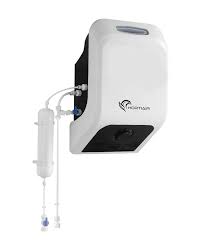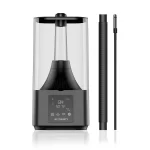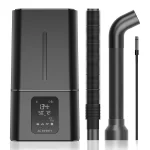Horti Air Ultrasonic Wall Humidifier
Features
Specifications
| Power | 110V |
| Voltage Range | 100-240V |
| Frequency | 50/60Hz |
| Current | 0.5A 240V |
| Mist Ouput | 1.6L / Hr |
| Particle Diameter | ≤5µm |
Includes
Why use a humidifier in your grow room?
Vapor Pressure Deficit (VPD) is a crucial concept in understanding plant health and growth, particularly in controlled environments like greenhouses or indoor gardens. It quantifies the difference between the amount of moisture the air can hold at a given temperature and the amount of moisture actually present in the air. This relationship is fundamentally tied to humidity, which plays a pivotal role in VPD.
Humidity refers to the amount of water vapor present in the air. When humidity is high, the air is closer to saturation, meaning it contains more moisture relative to its capacity at a specific temperature. Conversely, low humidity means the air holds less moisture relative to its capacity. VPD is a direct measure of how much more moisture the air can potentially hold, and it inversely correlates with relative humidity.
Its all about humidity.
For instance, when relative humidity is high, the VPD is low because the air is near saturation, and there is less “deficit” for the air to fill. This can lead to reduced transpiration rates in plants, as there is less gradient driving water loss from the plant to the air. In contrast, low humidity results in a high VPD, indicating a larger deficit. This high VPD creates a steeper gradient, promoting faster transpiration rates as plants lose water more quickly to the drier air.
Understanding and managing VPD is essential for optimizing plant growth. In greenhouses and indoor environments, adjusting humidity to achieve the ideal VPD can enhance plant health, improve nutrient uptake, and boost growth rates. Balancing humidity and VPD helps prevent issues such as fungal diseases, which thrive in high humidity, and dehydration stress, which can occur in very dry conditions.



